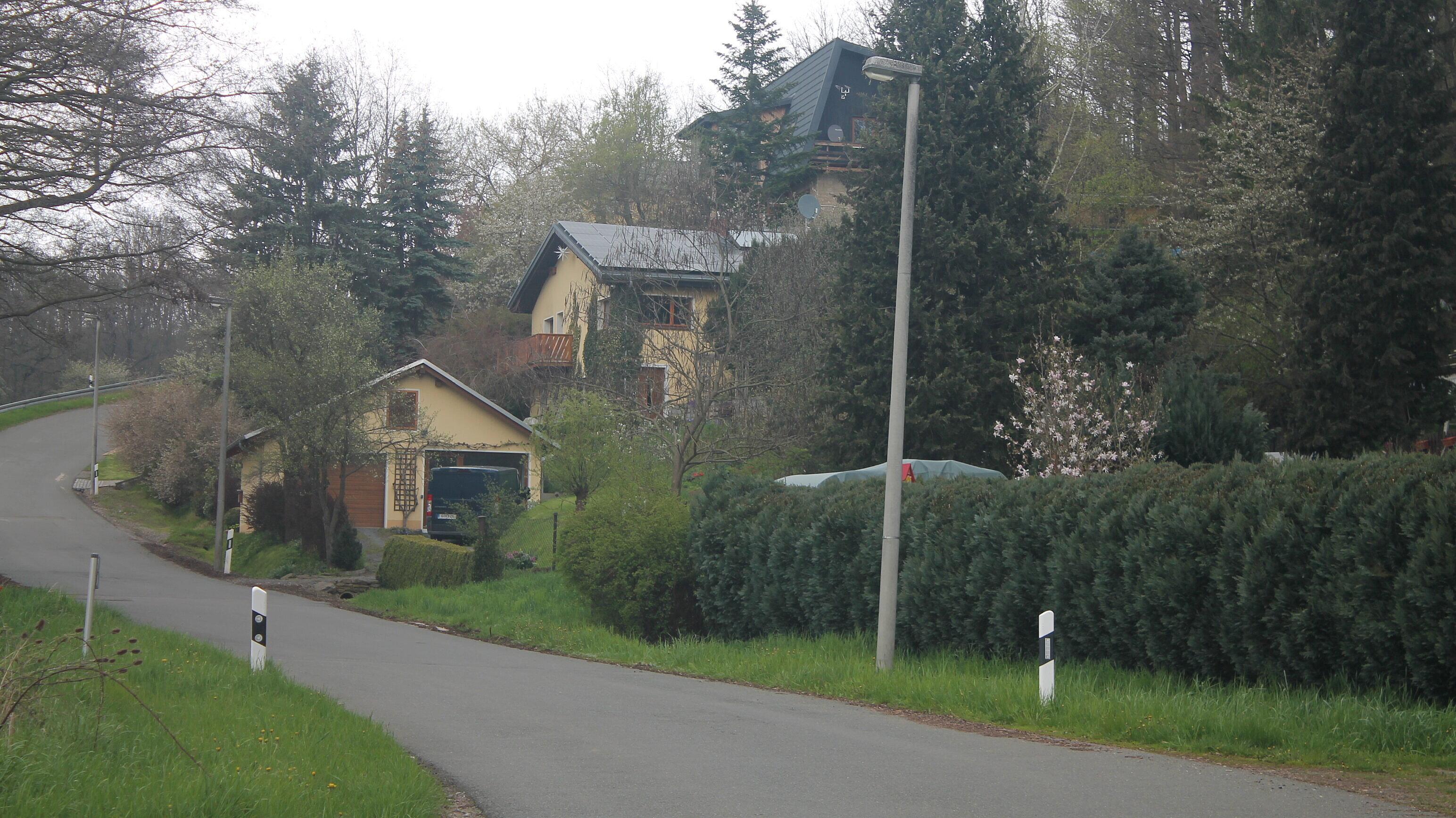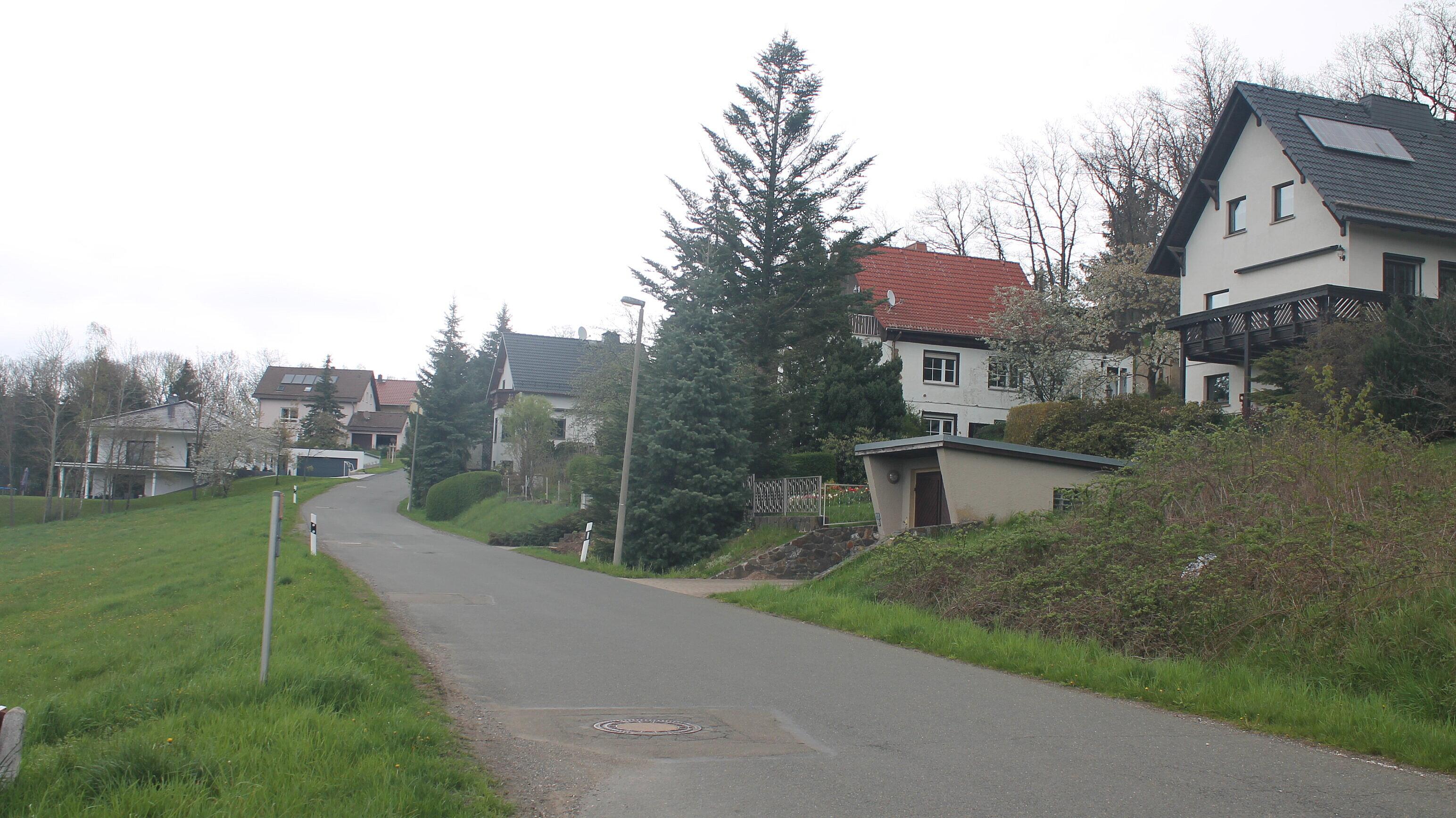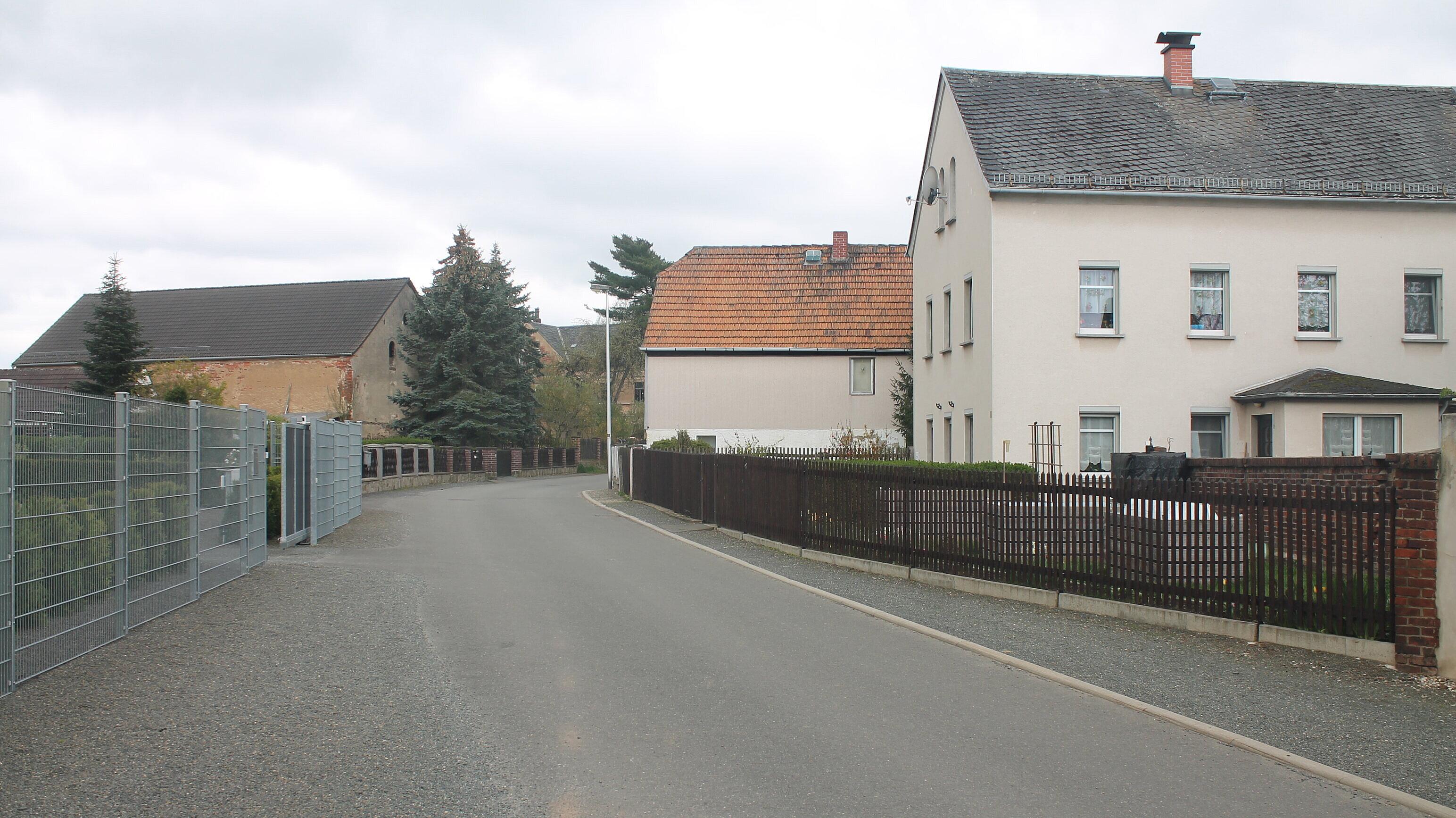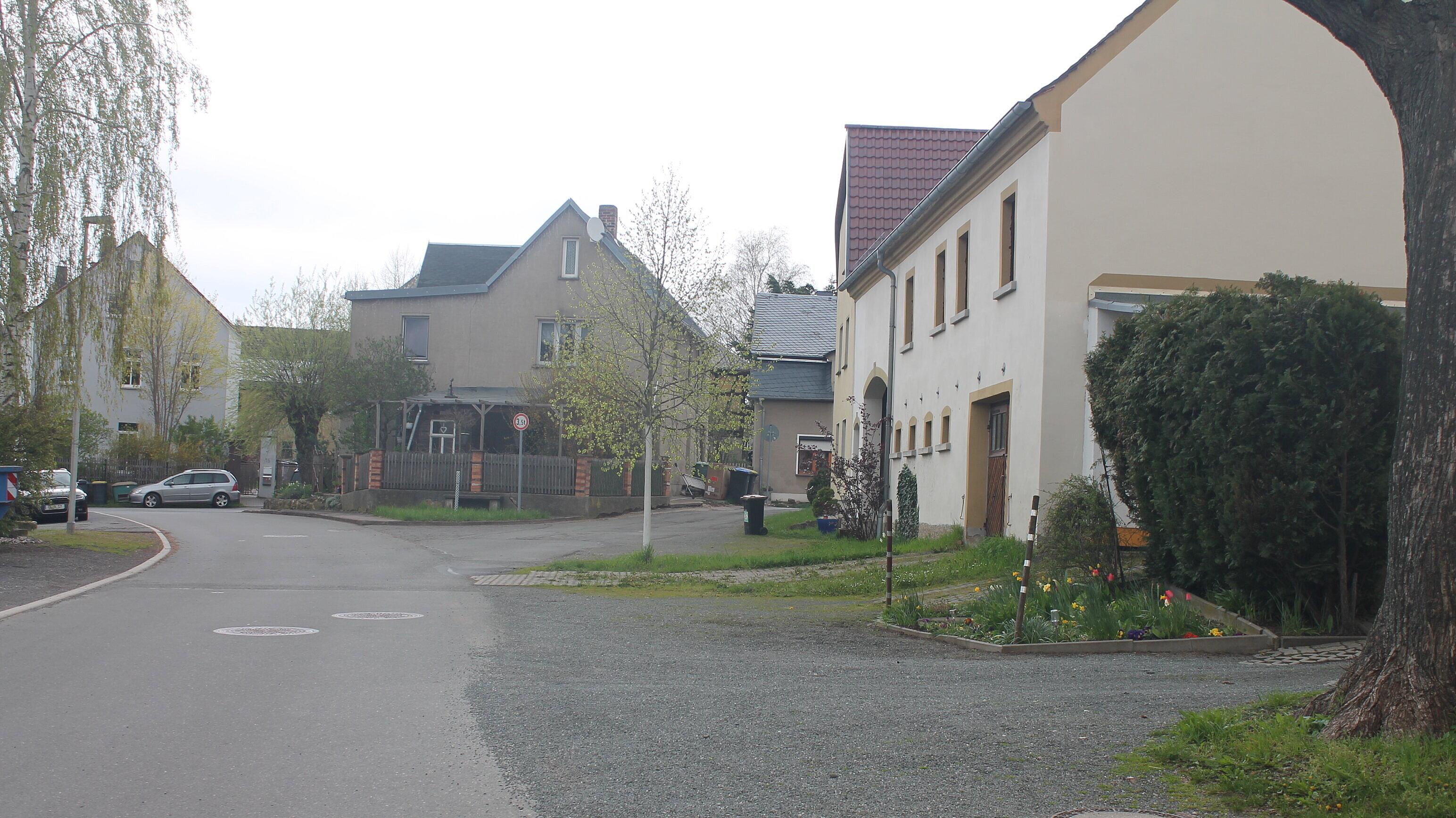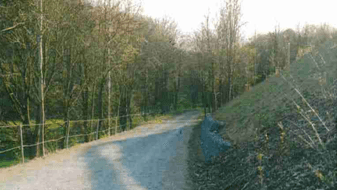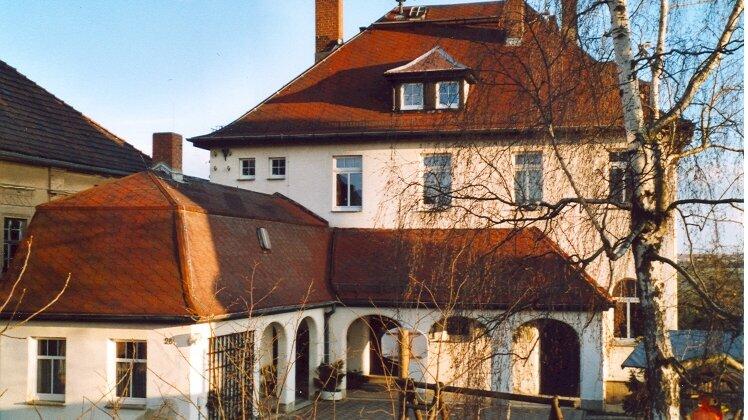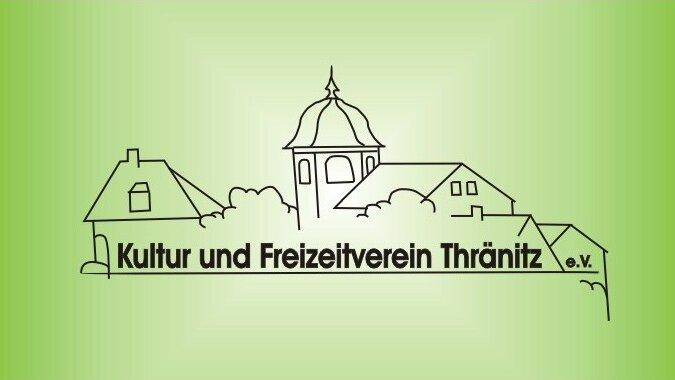District Thränitz
![[Translate to Englisch:] . © Matthias Diezel](/_next/image?url=https%3A%2F%2Fcms.gera.de%2Ffileadmin%2Fgera_de%2F_processed_%2Fc%2F8%2Fcsm_2024-10-16_Ortsteil_Thraenitz_39055b13d8.jpg&w=3840&q=75)
Data and facts:
| Name of the district: | Thränitz |
| with the localities: | Thränitz, Collis, Stern |
| District of the city of Gera since: | 27.07.1994 |
| Surface area: | 351 ha |
| Population: (as at: 31.12.2022) | 391 |
Location and transport connections
| Location: | Thränitz is located directly on the south-east tangent in the south-east of Gera and forms the entrance to the Gessental valley. The district is predominantly characterized by agricultural land and landscape conservation areas. |
| Utilization: | The existing grown village areas are strongly village-like in character and reflect the historical combination of agricultural and residential use in terms of design, alongside many newly built detached houses. The original development of Thränitz still clearly shows a street village. The farmland is cultivated by the Kauern agricultural cooperative. The recreational function of the village is particularly notable due to the location of the partially protected areas, such as orchards and landscape conservation areas and extensive hiking trails. |
| Landscape and site design: | The landscape is characterized by arable land and meadows, surrounded by woodland. The integration of the established villages into the landscape is characterized by a high degree of greening with typical trees and shrubs. Thränitz and the settlement "Am Stern" are located on a high plateau. Collis forms the gateway to the Gessental and has an outstanding location in the middle of the Gessental. Furthermore, the "Gessental" nature reserve, the Colliser Alm and the Gessenberg offer further views of the Elster Valley. Above the villages of Collis and Thränitz, there are particularly species-rich semi-arid grasslands, dry forests, wetlands and the Gessenbach floodplain as a biotope network. The southern nature trail also offers many opportunities for discovery. The street structure is village-like. The building structure is determined by predominantly rural building forms such as farmsteads, detached houses and barns. |
| Transport connections: | Thränitz can be reached via the south-east tangent. Internal access is via municipal roads. Naulitz can be reached by public transport every hour via line 19 of GVB GmbH. |
School / daycare center / leisure facilities
| Daycare center: | Daycare center "Regenbigen" |
| Thränitz Nr. 28 | |
| Carrier: Volkssolidarität Kreisverband Gera e.V. | |
| Sports fields/playgrounds/recreational facilities: | Sports and leisure field in Thränitz |
| Bowling alley in Collis | |
| Riding stable in Collis | |
| Worth seeing: | Grave in memory of the fallen of the Second World War |
| Natural monument megalithic tomb in Collis from the Stone Age | |
| Clubs: | Cultural and leisure association with mixed choir, music group |
| Volunteer fire department Thränitz | |
| Youth fire department Thränitz | |
| Förderverein Kindergarten e.V. | |
| Church / cemetery: | Protestant church with cemetery in Thränitz |
Commercial / retail / medical care:
| Gastronomy: | Restaurant with guesthouse and bowling alley in Collis | |
| Commercial enterprises | Thränitz | Anhänger Braun |
| Thomas Schipke GALA Gartenbau | ||
| Dry construction Michael Schmidt | ||
| Wünsch Security systems | ||
| Collis | Acoustic & dry construction Conrad GmbH• Akustik- & Trockenbau Conrad GmbH | |
| Restaurant Ute Kutschbach | ||
| Riding stable Uhlemann | ||
| Stern: | Pension Panzer | |
History
History Thränitz
Author: Heike Zippel, Thränitz
Together with Collis and Am Stern, Thränitz forms the Thränitz district of the town of Gera in Thuringia with 407 inhabitants (31.01. 2009).
Located on the south-east tangent of the Gera urban area, Thränitz offers direct access to the Gessental recreational area.
The Gessenbach and Lammsbach streams flow through the hilly surroundings of Thränitz.
Thränitz itself is situated on a high plateau, surrounded by attractive meadows, forests and fields. The southern nature trail leads through the village and invites you to explore.
The village can be assumed to have been founded in the Sorbian settlement period; the name Thränitz means grassland/settlement on the Grasbach stream. The oldest mention of the village can be found in the consecration document of 1238. In 1533 it is documented as Thrainitz, in 1534 as Dreynitz. In 1530 the following note can be found in an old court case file: "Interest and frogs in the village of Thrainitz have belonged to geyn Lubschwitz (Liebschwitz) from earlier times and subsequently moved to geyn Kaym (Kaimberg)." Around 1560, some farmers from Thränitz and Grobsdorf began to refuse to pay their feudal lords, which led to a large feudal trial in 1562 with 24 individual complaints; however, they did not achieve much.
Belonging to the Grand Duchy of Saxony-Weimar-Eisenach, the parish of Thränitz was over the centuries the mother church for the surrounding parishes of Kaimberg, Pforten, Gessen (until 1848), Collis, Zschippern (both of which belonged to the Reuss younger line), Grobsdorf (half of which belonged to the Kingdom of Saxony and half to the Duchy of Altenburg) and, from 1928, Poris-Lengefeld.
The church inventory from 1574 shows that beer is a staple foodstuff in this area; among other things, it lists "eyn braupfan darauf man sechs scheffel weidisch mas brauen kann..."
During the Seven Years' War from 1756-1763, the parish of Thränitz had to pay the Prussians 1000 thalers in contributions.
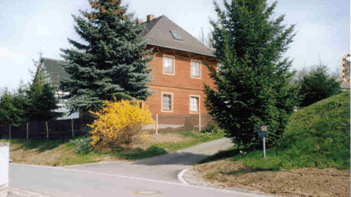
In the 18th century, the Cruciger Gang, a band of robbers from the Wurzen area, found shelter in Thränitz for several years. This cost the local farmers dearly.
With the construction of the housing estates "Am Rasenweg" and "Thränitzer Siedlung" in the 1960s and 1990s, the village has developed further from its original street village, but the simple fortified church with the cemetery still forms the center of the village.
Church construction began with the consecration in 1238 and the former wooden church was turned into a stone church. The reconstruction was completed around 1250. Over the centuries, the church underwent several architectural changes until it became the stately local church it is today.
The 3 bells and the baptismal font are probably the oldest remaining parts of the church furnishings.
The small and middle bells were cast by an unknown master in 1462. The large bell from 1501 is the work of the bell founder Martinus Rosenberg from Schleiz.
The church tower in its present form was built between 1719 and 1722.
The organ in the gallery was built by master organ builder Schilling in Weida in 1858.
In 1889 it was repaired by master organ builder Poppe, Roda, at a cost of 300 marks. In 1928, the façade pipes removed during the First World War were replaced. The last restoration of the organ was in 2007, followed by a festive service to mark the consecration of the organ.
There was already a church tower clock in 1863, but after several repairs it failed and disappeared until the tower received a new clock in 2008.
In 1866, a new cemetery gate was purchased for 150 thalers. At the same time, the gate pillars were renewed and the path to the sacristy was paved with stone slabs.
At the turn of the century, the cemetery wall was extended.
The interior of the church was given its current appearance when it was remodeled in 1952. The decorated extension was removed. The tower staircase, the choir and the organ, which were located above the altar, were moved to the entrance side. The side galleries were removed and the entrances on the left and right were closed off. The pulpit, which used to be above the altar, is now located on the right-hand side of the triumphal arch. The pulpit is decorated with 4 portraits of apostles.
A comprehensive renovation began in 2000. Financed by donations from citizens, the state of Thuringia and the regional church, the interior of the church was given a new coat of plaster with a light-colored paint. The ceiling above the chancel is once again adorned with a remarkable colorful ornamental painting.
The exterior was renovated in 2001 and the work was completed with the new weather vane and tower knob in 2003/04.
The church and cemetery are enclosed by a sand-lime brick wall and a wall made of hard-fired bricks.
Thränitz church, now white with its golden spire knob, can be seen from many directions.
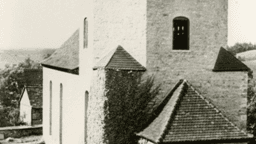
Schule/Kindertagesstätte
Thränitz was one of the oldest school towns in the area, even long before the Reformation.
In 1794 the school is described as being completely new, insured for 500 guilders, thatched with straw and the roof made of burnt bricks.
At Easter 1914, the original one-class school was given a new school building with two classrooms and a teacher's apartment. A 5-arched portico adorns the outside of the building.
In 1929, 58 children were taught here.
The teacher was a cantor in the church and worked in the community as a community servant.
The building was financed by the school penny
Until 1949, 2 teachers taught pupils in grades 1 to 8 in 2 classes.
From 1949 until its closure in 1971, only grades 1 to 4 were taught, after which the pupils attended schools in Gera.
In the following years, the converted and renovated building housed the kindergarten, a doctor's surgery and the municipal office with a meeting room.
In 1994, the building was handed over to the Volkssolidarität for the operation of a day care center on the basis of a 30-year leasehold contract.
In the following years, complex renovation work was carried out, such as the installation of sanitary and heating systems, the installation of new windows and the redesign of the outdoor area.
The children's facility with a capacity of up to 40 children was given the name "Rainbow". It is attended by children from Thränitz and the surrounding villages.
The children at the day care center enrich village life. They are always present at care events for the elderly, at village festivals and organize their own events.
If a group of children goes through the village with flowers and handmade items, the children congratulate the elderly on an anniversary and perform a serenade.
Cultural life
The culture and leisure association, which continues the work of the village club founded in 1959, is responsible for cultural and social life in the village together with the Thränitz volunteer fire department. The members organize numerous events, such as carnival celebrations, maypole planting, summer festivals, autumn bonfires, senior citizens' Christmas and are active in maintaining traditions.
In 1993, the founding of the Thränitz Cultural and Leisure Association was notarized.
In November 2004, the "Liederkranz" choral society, which has existed since 1853, was revived after many years of slumber. The choir is in possession of a rarity, the club flag from 1927 with elaborate embroidery and accessories. The choir meets twice a month for rehearsals and demonstrates its skills in a variety of performances.
The volunteer fire department also has a long tradition, dating back to the 19th century. Existing documents show that strict discipline and tight organization were paramount back then. Today, firefighters are actively involved in social life in addition to performing their duties. The young members of the youth fire department are an integral part of the volunteer fire department. In addition to technical training, there are training camps, exercises and excursions.
Since the incorporation into the city of Gera in 1995, new opportunities have opened up. The quality of work in the cultural association and the volunteer fire department has improved considerably. The members of the Thränitz volunteer fire department were given a small fire engine and the garages of the machine-tractor station (MTS), which were no longer in use, were converted into a fire station and community center in 2003/04 with a great deal of personal effort, donations in kind and money from the town and funds from the town of Gera. The premises are actively used by members of the clubs, comrades and citizens for training courses, cultural events, parties and family celebrations.
Stern
The residential area "Stern" with its 55 inhabitants (January 2009) is located in the east of the city of Gera in the immediate vicinity of the Gera-Leumnitz airfield.
The location of the area is scenically attractive with good views of the "Weiße Elster" valley and the surrounding area. The proximity to the town and the hourly bus service to Gera and Thränitz are convenient for the residents.
The settlement of Stern goes back to four former brickworks, whose workers settled there with their families.
The well-known "Goldener Stern" inn was run until 1977. All the buildings were demolished in 2003 and a housing estate with detached houses was built on the site. There is also a car repair shop and a warehouse here.
Collis
Collis is located in the south-east of the city of Gera on the Gessenbach, a tributary of the Weiße Elster.
The Collis Alps, a remarkable culm slate formation, are located in the town. It stretches in a north-south direction from Thränitz via Collis to Kaimberg.
Thanks to its good infrastructure, Collis is an ideal starting point or stage stop for excursions on the many hiking trails in the Gessen and Lammsbach valleys.
Until the founding of the state of Thuringia, Collis belonged to the Principality of Reuss of the younger line.
Archaeological finds suggest that the area was already inhabited during the Ice Age. In 1827, a burial mound from the Bronze Age was discovered in the district. During excavation work in 1875, Gustav Korn from Gera found four skeletons of three adults and one juvenile. The grave contained cord-decorated vessels, cups, bowls and a jug, as well as various flint tools and weapons. Iron slags found during excavations at the site suggest that there was an early metal smelter here.
The first permanent settlement was probably established around 1200. On June 2, 1293, a Friedericus de Culs is named as a witness in a document of Henry the Younger of Weida. This family probably owned a knight's seat in Collis, after which the village was named.
Collis is documented as belonging to the Thränitz manor in 1388 and 1413. In 1490 it was sold by Hans von der Phorten (Pforten) to the von Uttenhofen family. It later passed to Kaimberg, and in 1681 to the Knights of Pforten again.
Around this time, the Collis farmers rendered feudal service to the feudal lords of Kaimberg.
In 1827, the village had 17 houses and 90 inhabitants. Thränitz was the parish and school for Collis. From 1971, Pforten becomes the responsible school location.
The Gera-Gößnitz railroad line, which opened in 1865, was also to run across Collis land, leading to a lawsuit in 1864 over the expropriation of land in the Collis district. The nearest railroad station was Gera-Gessental on the edge of the village, above the former Collismühle watermill and restaurant. The mill was operated with a large wooden water wheel. After a fire in 1867, the building was rebuilt. The mill ceased to operate in 1936 and remained a restaurant until 1952.
A water pipeline was built in 1912 and electrification began in 1919.
In 1952, Collis became part of the municipality of Thränitz. In 1994, the village was incorporated into Gera.
A cattle fattening facility built in GDR times is still operated today by the Kauern agricultural cooperative (Greiz district).
A double-arched stone bridge crosses the Gessenbach at the village green. It was completely renovated in 2000/2001. The stream bed was paved, the arches were rebuilt and the bridge was given a better appearance thanks to higher side edges.
Collis is a tranquil village with just a few former farmsteads. Two 4-sided farms are listed buildings, one of which is the Uhlemann riding stables. There are boarding horses, horses for competition and leisure riding, an indoor riding arena with outdoor facilities and a farm store with natural food. In addition to riding lessons for young and old, the riding club offers a wide range of activities. By arrangement, it is also possible to explore the pleasant surrounding countryside by horse-drawn carriage.
The former Kutschbach farmstead has been converted into the "Collis am Gessenbach" inn. It includes a guesthouse, a bowling alley, a playground and a tranquil farm garden opposite. Many paths with benches invite you to hike around the village. Just behind the inn, a small path leads up to the Collis Alps with the hilltop tomb and a weather hut. From this height, visitors can enjoy a unique panoramic view.
